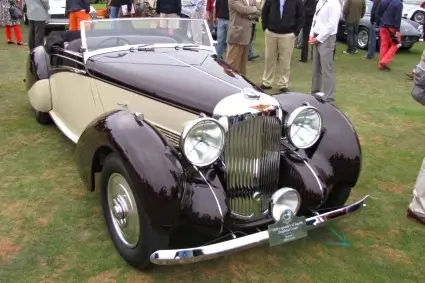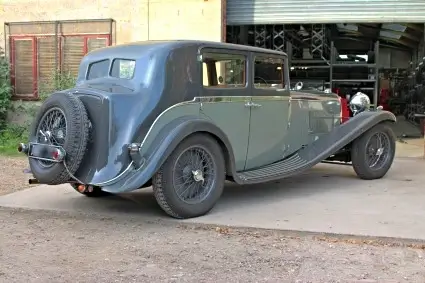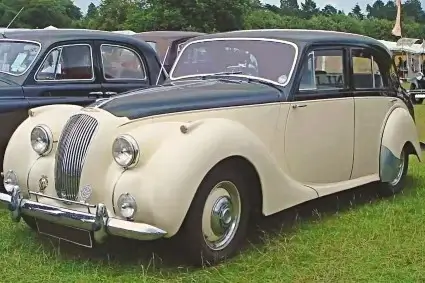Lagonda Tyres
Classic Lagonda Tyres
On the following pages, Longstone Classic Tyres give classic tyre fitment recommendations for AC cars.
01302 711 123
or
Email: sales@longstonetyres.co.uk
Lagonda History
American-born Wilbur Gunn (1859–1920), a former opera singer, founded the Lagonda firm in the United Kingdom in Staines, Middlesex, in 1906. In 1891, he became a British citizen and worked as a speedboat and motorbike engineer in Staines. He called the corporation Lagonda after the Shawnee hamlet in modern-day Springfield, Ohio, where he was born. This is a stunning glacially eroded limestone gorge. In 1907, he debuted his first automobile, the 20 horsepower, six-cylinder Torpedo. In 1913, Lagonda developed the 11.1, a technologically innovative little automobile with a four-cylinder 1,099 cc engine that, by 1914, had a panhard rod, a rivetted unibody body, and the first-ever fly-off handbrake.
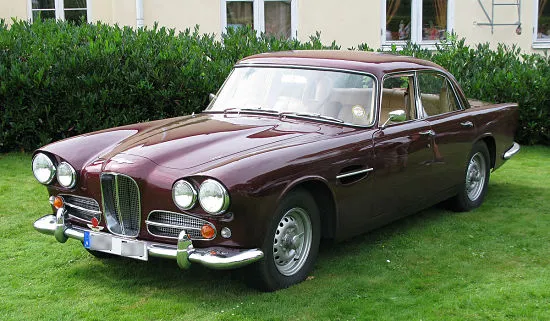
The ratchet control button on the end of a fly-off handbrake is intended to function in the opposite direction of what is generally assumed. If the lever is lifted or dragged back to the "on" position, releasing it instantly unless the end button is hit and kept in place before releasing the lever. When the brake is set, it is released by pulling the handbrake lever in the setting direction. This system was usually used in sports automobiles to allow for a quick race away, such as at traffic lights. It can also be utilised to assist the back wheels in sliding without fear of the ratchet activating the brake.
During World War I, the Lagonda business produced artillery rounds. After the war, the 11.1 was continued with a bigger, 1,400 cc engine as the 11.9 until 1923, and the revised 12 until 1926. Following the death of Wilbur Gunn in 1920, three current directors took over. The 14/60, the first of the company's sporting vehicles, was introduced in 1925, with a twin-cam 1,954 cc four-cylinder engine with hemispherical combustion chambers. The two-litre Speed variant, which could be supercharged in 1930, introduced a greater power engine in 1927. From 1926 to 1930, a longer chassis variant, the 16/65, with a six-cylinder 2.4-litre engine, was offered. The three-litre, powered by a 2,931 cc six-cylinder engine, was their penultimate automobile of the 1920s. This lasted until 1933 when the engine was increased to 3,181 cc.
The 16–80 was a new model for 1933, having a two-litre Crossley engine and a preselector transmission from 1934. The Rapier, a new little automobile with a 1,104 cc engine and a pre-selector transmission, debuted in 1934. The 4.5-litre M45 with a Meadows-supplied six-cylinder, 4,467 cc engine was at the opposite end of the spectrum, reaching over 100 mph. The M45R Rapide, a sporty variant with a modified M45 engine and a shortened chassis, won the contentious Le Mans race in 1935. In 1935, the three-litre was increased to 3.5 litres.
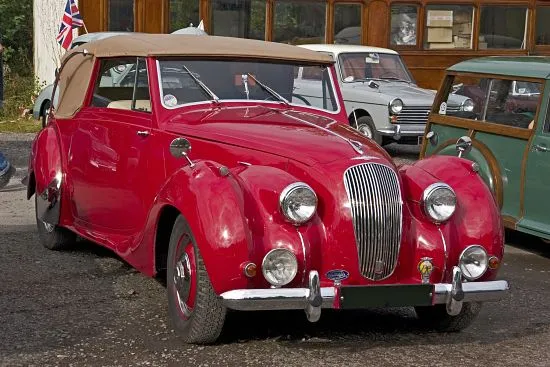
Financially, things were not going well, and the receiver was appointed in 1935, but the firm was purchased by Alan P. Good, who outbid Rolls-Royce. He also convinced W. O. Bentley, along with several of his racing department personnel, to quit Rolls-Royce and join Lagonda as a designer. The 4.5-litre line was renamed LG45, with lower but bulkier bodies and an LG45R Rapide variant. The LG45 was available in three variants known as Sanction 1, 2, and 3, each featuring more Bentley refinements to the engine. The LG6, with independent front suspension via torsion bar and hydraulic brakes, was introduced in 1938. The V-12 was introduced in 1937. The 4,480 cc engine produced 180 horsepower and was reported to be capable of ranging speeds from 7 to 105 mph in top gear and revving to 5,000 rpm. The engine produced 200 horsepower.
At the onset of WWII, Richard Watney was the managing director of Lagonda, he was a production specialist who, during the war, organised and oversaw one of the largest British gun manufacturing sites, as well as plants that produced 50,000 25 pound shells each day. Watney also created and manufactured the "Crocodile" and "Wasp" flame-throwing systems for military vehicles." David Brown purchased the firm in 1947 and relocated it to Feltham, Middlesex, along with Aston Martin, which he had previously purchased.
The last prototypes from Bentley, the 1948 2.6-litre with new chassis and completely independent suspension, were used to restart production. Its innovative 2,580 cc dual overhead cam straight-six engine served as the foundation for Aston Martin engines in the 1950s. This was succeeded by the 3-litre in 1953 and remained in production until 1958. Many felt the Rapide brand had vanished, but in 1961 it was reintroduced with a four-door saloon based on the contemporaneous Aston Martin DB4, an aluminium body by Carrozzeria Touring of Milan, and a 3,995 cc engine capable of reaching 125 mph. Aston Martin-Lagonda, as it was now known, had relocated to Newport Pagnell in Buckinghamshire at this time. The Rapide was in production until 1965.
The Lagonda name was briefly revived in 1969 when it appeared on a four-door prototype of the new DBS model. The prototype was assigned chassis MP230/1 and was kept by the manufacturer until 1972 when it was registered "JPP 5G" and used by Sir David Brown as his personal automobile. The automobile was powered by a prototype five-litre V8 engine, which was immediately replaced with an early 5.3-litre commercial quad carburettor version. Seven Lagonda four-door saloons were built between 1974 and 1976, based on the 1969 prototype. In place of the prototype's twin-headlamp treatment, the production versions had a single-headlight treatment with a Lagonda "horseshoe" grille.
In 1976, William Towns developed a new Lagonda saloon, the spacious and futuristic Aston Martin Lagonda. This low, somewhat square, wedge-shaped automobile was available until 1990 and was constructed on Aston Martin V8 components. A total of 645 were constructed. At the 1993 Geneva Motor Show, Aston Martin unveiled the "Lagonda Vignale" a concept car. According to Automotive News Europe, Aston Martin announced on September 1, 2008, that it will relaunch its Lagonda brand to assist it to grow into new sectors such as luxury saloons and commemorate Lagonda's centenary anniversary in 2009.

